#and then doing swizzles and skating backwards is so hard
Note
ahh tumblr accidentally unfollowed you when i just wanted to send you a message that I love hearing about your ice skating endeavours <3 when does the next session start? what are some of your favourite things you have learned so far? and overall just hi Genesis it's been a while how have you been <3
Hi Rina!!! I've been good for the most part. Stressed about certain things in life but I've been trying to enjoy the little things that make me happy. I got back into studying Korean and even started learning Japanese. Kinda became obsessed with figure skating....well mostly Yuzu but YES ice skating! I love it so much even though I'm so bad at it. It's so much harder than I thought. I'm so bad at maintaining my balance when skating backwards but the backwards swizzles and wiggles are my favorite so far. I just want to keep practicing them until I can finally do them without struggling to stay balanced. Also one foot glides are so fun but so hard. I went to the rink today and practiced for like 2 hours and i feel like i definitely improved on them. The next session starts this week so I'm excited to see what new moves we will be learning. I'm so so glad I decided to try ice skating because it makes me so happy.
Thank you so much for asking Rina💕 this got so long but I hope you've been well too!
1 note
·
View note
Text
I had a dream where I finally figured out how to do forward swizzles perfectly on the ice and now I’m ready to go back to the ice skating rink and figure this out.
#swizzles are hard#how has it taken me this long to find a sport I actually like?#I spent so much time thinking about what I could adjust yesterday to do them right#ice skating#its crazy how close this is to doing music#It really clicks why sports medicine and psychology are so closely linked#I woke up right before dream me was about to conquer backwards wiggles#im learning to skate yall#its harder then it looks
7 notes
·
View notes
Note
Just went skating and fell on my butt. How about Kokichi having some experience skating and teaches his s/o how to skate? Sorry if that was worded weird 😅
Kokichi teaching his S/O how to skate

Hey! I hope you’re feeling alright (even if I’m posting this a few days after you submitted this request). It was worded just fine, for this I did skateboarding, roller skating and ice skating. I hope that’s fine! This is a long one.
There’s injuries as well, not descriptive but there’s still mentions of getting hurt.
Skateboarding.
♡ “Just get on the dang board you wussy!”
♡ Learning how to skate board was hard, but the fact you and Kokichi were on a rocky street made it harder.
♡ “Why can’t we just go to a skate park? Don’t you think this is more dangerous?”
♡ “You are NO fun! Now cmon! Do what I taught you to!”
♡ “You didn’t teach me anything! Ugh, whatever.”
♡ You held your arms out in front of you, stepping onto the skateboard, immediately losing balance.
♡ “Chiiiilll~”
♡ Kokichi held your waist to help you stop shaking so much.
♡ As soon as you got balanced, he started to push you, but still held onto your waist and was walking along with you.
♡ “The road up ahead gets smoother, I’ll help you out up there, nishishi~”
♡ Once you two got up to the smoother side of the road, he helped you get your stance on the board right.
♡ “You aren’t completely messing me up so I hurt myself, are you?”
♡ “Nooo! What type of boyfriend would I be to do that? D-..Do you seriously doubt me that much?!”
♡ “Kokichi, don’t start. The neighbors will hear.”
♡ “Fine, fine~ Now put this foot on the ground.. And launch yourself! You remember how to stay balanced riiight?”
♡ “Y-Yeah…”
♡ “Good! Now shoo!”
♡ With hesitation, you pushed yourself, putting your foot back on the board.
♡ It worked!
♡ ...Now how do you make it stop?
♡ You crashed into a mailbox.
♡ To make it worse his skateboard fell into a nearby ditch
♡ ..Whoops.
♡ He forgave you though, and bought you two matching skateboards!
♡ Kokichi gave you a proper lesson at the skate park.
Ice skating
♡ The perfect date!
♡ Right?
♡ Wrong.
♡ You had no clue how to ice skate.
♡ Luckily your boyfriend did!
♡ He was helping you put on your shoes now while you were putting on a helmet.
♡ Kokichi claims he’s done this plenty of times, but that could be one of his many lies.
♡ You decided to believe him, he wouldn’t hurt you, right? At least not on purpose.
♡ “Okaayyy! Now, hold onto my shoulders! It’s hard enough to walk into the rink by itself.”
♡ As you grabbed onto his shoulders, he held your waist, doing the best he can to walk backwards into the rink while you shakily did your best to keep up.
♡ But as soon as you stepped foot onto that rink, your legs started doing the splits.
♡ Kokichi helped you of course.
♡ “Jeez, I know you love me but to do it in public, preeeettyy weird~”
♡ “S-Shut up…”
♡ It seems Kokichi was telling the truth when he said he’s been here plenty of times, he taught you to glide, stroke, swizzle, and how to stop.
♡ All while holding you so you don’t fall.
♡ You had your mistakes here and there, but they were always ‘get up and try again!’ mistakes.
♡ “I’m gunna let go now, mkay? If you fall on your butt it’s on you! I taught you soooo well and it’ll prove you don’t listen to me!”
♡ He puffed his cheeks out, to which you smiled at.
♡ “Whatever you say..”
♡ Kokichi took his hands off your waist and peeled your hands off his shoulders.
♡ He watched not too far away, you were… frozen in place.
♡ “Cmon! Do the gliding thingy!”
♡ You tried.
♡ You failed…you landed on your face.
♡ “Cmooon really?! Did you not listen to me?!”
♡ Kokichi helped you get up.
♡ “You did so well when I was helping! I’m ashamed (Y/N)!”
♡ “Why can’t we just skate like we did before? You obviously know how to skate backwards…”
♡ He blinked, followed up by no response for a while.
♡ “Okay!”
♡ He held your waist and you put your hands on his shoulders, then you two continued to skate.
♡ It was fun, he let go of you and backed off in the middle of it though… but you kept gliding like he was still there.
♡ You learned how to ice skate that day.
Roller skating
♡ You were very hesitant to do this for a while now, Kokichi was the one who brought it up so you weren’t exactly sure if it was the safest.
♡ But, you caved one day when he gave you puppy eyes.
♡ “Now move like a duck to the side walk!”
♡ The sidewalk was wide, wider than most sidewalks, so Kokichi could squeeze beside you perfectly and hold your hand.
♡ “Remember how you saw me glide a few days ago?”
♡ “When you were trying to convince me to roller skate?”
♡ “Shaddap! Do you remember or not?!”
♡ “Haha, I do, I do.”
♡ “It’s kinda like ice skating but with wheels! And it’s a lot easier to stop!”
♡ It was actually pretty easy, at first…
♡ You two glided along the sidewalk easily, but then came the obstacles.
♡ Wind, small pebbles, cracks in the sidewalk…
♡ At that point you were gliding by yourself, Kokichi let go of your hand and you decided to speed up.
♡ You got hurt.
♡ Not too hurt! You had knee pads, a helmet, elbow pads.
♡ Kokichi came prepared, he didn’t like seeing you hurt.
♡ He still blamed himself for putting you in that situation though.
♡ He peppered wherever was hurt in many, many kisses. Even if you reassured him that you were fine.
♡ You two did it again the next day, and had plenty of fun.
#kokichi#kokichi oma#kokichi ouma#ouma kokichi#oma kokichi#kokichi x reader#kokichi oma x reader#kokichi ouma x reader#ouma kokichi x reader#oma kokichi x reader#kokichi imagine#kokichi oma imagine#kokichi ouma imagine#ouma kokichi imagine#oma kokichi imagine#drv3#drv3 kokichi#drv3 kokichi x reader#danganronpa#danganronpa kokichi#danganronpa kokichi x reader
54 notes
·
View notes
Text
Spinning (and spinning. and spinning.)
I am not the most balanced person. It took me a solid four months to get a three-revolution two-foot spin, usually devoting at least a half hour of weekly practice time to spinning. I learned the spiral method-left foot stays still-ish, right foot traces a spiral in from a half-swizzle, then arms come in for speed. In March, I could establish a spin from my feet and be rotating stably with my arms still out (helpful when starting to pick a foot up).
Since I got new skates, I have to re-learn where the rocker is. And it kinda sucks. It’s just plain frustrating. After all the skate adjustments, I’m up to two very snowy revolutions, because I keep catching my toe picks. Weirdly, while the new insoles seemed to help at first, I’m starting to feel like there’s a hollow between the arch and toes, so the ball of my foot just doesn’t make enough contact with the sole for me to adjust and find the rocker. I spent an hour spinning on Sunday. Normally, I’d get dizzy in a few minutes, but now I can’t spin for long enough to have that happen. I’ve managed one or two quieter, better spins-by keeping my knees more bent, so that my heel can actually sit at the back of my skates and I can balance forward-but-not-too-forward. Still, It feels bizarre, and shouldn’t be necessary per se.
Between classes and club practice, several coaches have offered recommendations at this point, mostly related to entry techniques: use momentum from bringing an arm forward, spin from a pivot (I’ve never had luck with that), and “do a backward swizzle with your left foot and a forward swizzle with your right foot.” None of it has helped get me off my toe picks. It’s doubly frustrating because many of the beginners who started this fall have gotten a pretty solid 2+ revolutions after only a couple weeks. For me, spinning is /hard/. And now is when everyone here realizes I really am a slow learner.
On the plus side, low toe picks=higher waltz jumps
1 note
·
View note
Text
Gliding Across the Ice for Victory (Pt. I)
Elegance. Sophistication. Artistry. Precision. These are only some of the few things that can be observed when spectating one of the most famous sports among young girls and women – figure skating (Eschner, 2018).
According to Scott Hamilton (2019), figure skating is a sport in which “ice skaters, singly or in pairs, perform freestyle movements of jumps, spins, lifts, and footwork in a graceful matter.” The sport had gained its name due to the patterns that skaters do on the ice.
And today, in this blog post, we will be witnessing such patterns and figures of the sport as we review the Full Match of the Women’s Singles Short Program of Figure Skating from the 2018 Winter Olympics in PyeongChang. But before we get into the good stuff, we will first take a look at some of the basic need-to-knows of figure skating.
Court Dimensions
As you may or may not have noticed, skating rinks used in different competitions vary in size. The reason for that is because the size depends on the level of skill that athletes and performers possess – the largest most notably being the rink used in the Olympics (Powell, 2020).

[all rights reserved to the original owner of the graphic: Wikipedia]
In the Olympics, the size of the rinks measures 30 meters by 60 meters; in the NHL, the rinks are 26 meters wide and 61 meters long; and, rinks used in Europe sometimes measure 30 meters by 64 meters in size. Regardless of these variations, the International Skating Union (ISU) prefers the size of the rinks used in the Olympics because they “make the differences in skill between skaters more apparent (Wikipedia, 2021).” Ice rinks also have rounded corners, measuring a corner radius of 8.5 meters.
Since the quality of the ice in the rink is affected by temperature (among others), the surface temperature of the ice sheet is maintained around −5.5 °C (22.1 °F) and −3.5 °C (25.7 °F). Once the quality of the ice’s surface deteriorates, an ice resurfacer comes out and cleans and smoothens the surface of the ice sheet.

[all rights reserved to the original owner of the graphic: Dimensions.com]
Equipment
According to a web site called Ice Skating Passion (2021), there are 10 pieces of essential equipment to have when taking up the sport of figure skating.
The first on the list is the ice skates, and these are the shoes with a blade on the bottom that will help the player slip and glide across the ice. The fit has to be adjusted completely according to the foot size of the wearer in order to provide utmost comfort during the match, as well as to ensure that no potential accidents from mismeasurements will be made. After the skates are the socks, and people usually wear this to prevent their feet from getting cold. However, some high-level skaters do not wear this piece of equipment because it creates much friction. Following that is the ice skating bag, and this is where the ice skates will be stored during transportation to avoid getting the skates damaged in any way. The fourth piece of equipment is the skate guards, and these protect the blades on the bottom of the skates as the athlete walks around on non-ice ground. The absorbent cloth/towel is the next essential equipment, and this is used to dry the blades on the skates to prevent rust, as well as for mounting surfaces after a practice.
The sixth piece of equipment is the soakers, and this piece of equipment is used to absorb the humidity that built up within and around the skates due to use. Following that is the appropriate clothing; skaters have to wear layered, flexible, form-fitted and water-resistant clothes. After that is the gloves, and while these are mostly only used during practice and some skaters don’t enjoy wearing them, the equipment still provides warmth and protection when falling. The ninth piece of essential equipment is the water bottle because it is always important to stay hydrated to maintain good health and performance. The last essential equipment is tissues, and this is mostly used for skaters who develop nasal congestion while moving around in the ice.
Aside from the 10 essential equipment, it would also be good to note that players should keep an extra pair of laces, lace tightener, boot covers, spare hair bands, and pads for beginners’ elbow and knee protection.

[all rights reserved to the original owner of the graphic: Pinterest]
Basic Skills
In figure skating, the basic skills are divided into 6 levels – each level being respective to the level of skill that a player has. The following skills and levels were taken exactly as is from the Skating Academy web site (Basic Skills, n.d.):
Basic Skills 1
Sit on ice and stand up
March forward across the ice
Forward two-foot glide
Dip
Forward swizzles — 6–8 in a row
Backward wiggles — 6–8 in a row
Beginning snowplow stop on two feet or one foot
Bonus skill: Two-foot hop in place
Basic Skills 2
Scooter pushes — R and L
Forward one-foot glides — R and L
Backward two-foot glide — Glide the length of skater’s height
Rocking Horse (one forward swizzle, one backward swizzle) — Repeat twice
Backward swizzles — 6–8 in a row
Two-foot turns from forward to backward in place — clockwise and counterclockwise
Moving snowplow stop
Bonus skill: Curves
Basic Skills 3
Beginning forward stroking showing correct use of blade
Forward half swizzle pumps on a circle — 6–8 consecutive clockwise and counterclockwise
Moving forward to backward two- foot turns on a circle — clockwise and counterclockwise
Beginning backward one-foot glides — focus on balance
Backward snowplow stop — R and L
Forward slalom
Bonus skill: Forward pivots – clockwise and counterclockwise
Basic Skills 4
Forward outside edge on a circle — R and L
Forward inside edge on a circle — R and L
Forward crossovers — clockwise and counterclockwise
Backward half swizzle pumps on a circle — clockwise and counterclockwise
Backward one-foot glides — R and L
Beginning two-foot spin — Up to two revolutions
Bonus skill: Forward lunges — both legs
Basic Skills 5
Backward outside edge on a circle — R and L
Backward inside edge on a circle — R and L
Backward crossovers — clockwise and counterclockwise
Forward outside three-turn — R and L
Advanced two-foot spin — 4–6
Hockey stop — both directions
Bonus skill: Side toe hop — R and L
Basic Skills 6
Forward inside three-turn — R and L
Moving backward to forward two- foot turn on a circle — clockwise and counterclockwise
Backward stroking
Beginning one-foot spin — 2–4 revolutions, optional free leg position and entry
T-stops – R and L
Bunny hop
Forward spiral on a straight line — R or L
Bonus skill: Shoot the duck — R or L
Technical Skills
Once a skater masters the basic skills, they can now move on to the more difficult, more technical skills of figure skating. These skills are some of the main moves and techniques that are used and open to all skill levels, despite being more technical. The following technical skills were taken exactly as is from the Real Buzz web site (n.d.):
JUMPS
Toe Jumps
Toe loops — When attempting a toe loop, the figure skater jumps in a counter-clockwise motion. He (or she) quickly glides backwards over the ice rink before using the outside edge of their back skate — and the toe-pick of their front skate — to launch into the air. The performer spins half a revolution in mid-air before landing, once more, onto the outside edge of their back skate.
Flips — When attempting a flip jump, the figure skater glides backwards across the ice rink before launching into the air by pushing on the inside edge of their back foot and the toe-pick of their front skate. The performer then spins a full-revolution in mid-air before landing smoothly onto the ice and continuing to skate.
Lutzs — The lutz jump is exactly like the flip; only here the skater launches into the jump from the outside edge of their back foot rather than the inside edge. It’s very difficult to stay balanced when launching into a full, mid-air revolution from the outside edge of the skate. As a result, the lutz is a tricky move to master, requiring hours of hard work, pain and frustration. In the end, it’ll be worth all the effort though!
Edge Jumps
Salchows — The salchow jump sees the performer launch into the air by pushing on the inside edge of their strongest foot. After performing a half-revolution in mid-air, the skater then lands smoothly onto the outside edge of their weaker foot, before continuing to skate their way across the ice.
Loop jumps — When attempting a loop jump, the figure skater takes off from the outside edge of their strongest foot before spinning a full-revolution in the air. The performer then lands backwards onto the same foot and either carries on skating across the ice or prepares to launch into another spin.
Axels — The axel is a key ice skating technique for all beginner skaters to aspire to! Here, the performer gathers momentum before launching forwards into the air by springing from the outside edge of their strongest foot. The skater spins one-and-a-half revolutions in mid-air before landing onto the outside edge of their weaker foot. Tricky, eh? Without the aid of a toe-pick to help launch the skater, this is an incredibly difficult maneuver which can take years of hard work to master. So keep practicing!
SPINS
Upright spin — This is one of the easiest spins to master in the early days of your ice skating tuition. Upright spins see the skater position their body in a straight, upwardly position with one or both of their feet remaining on the ice throughout the maneuver.
Sit spin — This spin is self-explanatory really! It’s carried out when the performer skates on one leg only, whilst stretching the other limb straight out in front of them. Whilst spinning, the performer bends their skating leg as far as they can — essentially sitting down as low as possible without toppling over. In competition, judges award points based on how close to the ice a performer can bend whilst still maintaining their rhythm. It really is a case of ‘how low can you go?’
Camel spin — This popular move sees the performer position his or her body into a ‘T’ shape. The performer’s stronger leg is used for skating, whilst the other limb is stretched backwards, straight behind the skater’s head. During this spin, the performer leans their neck forward, bringing their head in line with the straightened rear leg. This maneuver may sound rather daunting, nevertheless, with practice and patience, the balance and suppleness that the camel spin requires will come to you in time.
Tactical Skills
Like every other sport out there, figure skating also has tactical skills that one can apply to their performance. However, unlike a portion of those “every other sport,” figure skating doesn’t require an athlete to directly play offense or go on defense against an opponent, hence the tactics would have to be used on the self.
According to Sarah Dunn (n.d.), the first tactic on the list of four would be to use your flexibility. Since figure skating is comprised largely of graceful and fluid movements, it is important to make use of one’s flexibility to ensure that utmost fluidity in a performance is delivered. To use it, it is important to always stretch to prepare the muscles for exertion. After that is utilizing the right amounts of balance and strength, which means exerting just enough of both to execute on-point skills and to maintain footing while on the ice. The third tactic is do not be afraid of falling [on the ice] because Kelly Cassity once said “Learning how to fall correctly will help protect you from injury when you tumble unexpectedly.” Lastly, the fourth tactic is build and have confidence; confidence is developed as a result of having good balance and strength on your blade edges, so in order to become more confident on the ice, one must first build their strength and balance simultaneously.
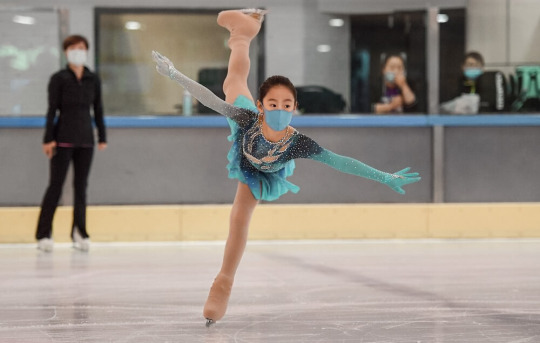
[all rights reserved to the original owner of the graphic: Somag News]
Rules of the Game
To keep the honor of figure skating intact, a system of rules was implemented and followed not only by the skaters themselves but also everyone else involved. The following rules were taken exactly as is from the article posted by the NBC Connecticut (2018):
The women’s, men’s and pairs’ short programs last a maximum of two minutes, 50 seconds. The women’s free skate lasts between 3:50 and 4:10, but pairs’ and men’s free skates can last between 4:20 and 4:40.
The ice dance short dance can last anywhere from 2:40 to three minutes, and the genre of music is dictated by the International Skating Union. For the Olympic season, the short dance must use music with a rumba rhythm plus any number of the following Latin American dance rhythms: samba, mambo, meringue, salsa, bachata and any closely related Latin American or Caribbean rhythms.
The Pyeongchang Olympics are the first Games in which women, men and pairs skaters are permitted to use music with lyrics. The new rule was introduced for the 2014-15 season, but this is the first Olympics the rule change affects. Ice dancers had already been allowed to use music with lyrics.
The free dance has no required musical genre, but the music must be arranged in such a way that it has a rhythmic beat and creates an “interesting, colorful, entertaining dance program.” It lasts about four minutes.
SHORT PROGRAM (Hamilton, 2019)
The short program is made up of required elements.
Singles skaters at the senior level are required to complete eight designated elements set to music lasting no longer than 2 minutes and 40 seconds.
Skaters choose their costume and music and may perform the elements in any sequence they choose, but they cannot repeat an element if they miss it.
LONG PROGRAM (Hamilton, 2019)
The long program (also called the free skate) is designed to display skill and grace as well as jumping ability.
Senior men skate four and a half minutes, while women skate for four minutes.
Although there are no required elements, judges are looking for balanced programs that showcase the technical and artistic talent of the skater. Particular attention is paid to the difficulty of the jumps and how well the skater performs in harmony with the instrumental music.
Elite women will include up to six different triples, some in combination, in their programs, and elite men perform at least seven triples, with some also in combination, and often one or two quads.
The skaters choose their own spins but must demonstrate four different types.
Pairs skaters at the senior level must include three different lifts (but no more than five) including one twist lift, at least one solo jump, a jump sequence, a throw jump, and only one solo spin.
SCORES AND JUDGING:
Skaters receive two sets of marks for each program: the technical element score and the program component score. The technical score is based on the difficulty and execution of the technical elements, such as jumps and spins, while the program component is based on artistry, interpretation and presentation. The two numbers are combined for a skater’s total score.
The total element score is a sum of all the element scores. A total score is determined by two sets of people for each program: the nine-person judging panel and a three-person technical panel.
The technical panel identifies each element (such as discerning a flip from a Lutz, or a quadruple jump from a triple jump). They are also charged with verifying if jumps are fully rotated or landed short.
For elements such as spins and footwork, the technical panel assigns levels numbered one through four, where four is the highest. A skater can enter the spin in a difficult way, or change position during the spin to make it more difficult.
This is the reason why a technically gifted skater like Chen can exponentially rack up points, while Rippon, who relies more on his performing skills, does not post the same kinds of scores.
The members of the judging panel evaluate each element based on how well it was performed, assigning a grade of execution between -3 and +3 to the element’s predetermined base value. The highest and lowest scores get dropped while the remaining seven scores are averaged.
Then, the judging panel adds the base values with the grades of execution to get the total element score.
The program components score is based on the judges’ determination of the overall program, and not the individual elements. The judges mark five program components on a scale from 0.25 to 10.
The scores are averaged to form the score out of 10 for each component. Then, that total is multiplied by a factor, which differs for each program, so that the total element score and the program components score are weighted more equally in the makeup of the score.
The factored results are rounded to two decimal places and added, providing the program components score.
The total segment score is the technical and program scores added together. The skater’s final score is the total minus any deductions, which can be taken for missed time limits, illegal elements, costume violations, program interruptions and falls.

[all rights reserved to the original owner of the graphic: Insidethegames]
Who officiates the sport? And how do they do it?
According to the Skate Canada (n.d.) web site, figure skating has a total of 6 different kinds of officials. The first of those six are the evaluators, and they are tasked to assess the skaters during assessment days to evaluate whether or not said skaters can move on to the next round/s. During assessments, the evaluators will act as both the assessor and referee for on-ice activities. Next, the technical specialists and the technical controllers are former athletes, coaches, judges or referees who are responsible for identifying the elements and their respective level of difficulty performed by each skater in their performance. After that are the judges, and these are officials who have the duty of assessing a skater’s performance, assessing competitive tests, and officiating all levels of the competition.
Following the judges are the referees, and they oversee the ice conditions, ensures that all rules applicable to an assessment or competition are followed and acts as chairman of the judges’ panel and arbiter in policy or procedure disputes. At smaller events, the referee will typically act as both referee and one of the judges. The last type of official are the data specialists who calculates the judges’ points on each performer and tabulates the final result. If open marking is used at an event the data specialists are normally found at ice level. At other events, they will be in the result calculation centre. Generally, each event will have a Chief Data Specialist who ensures all accounting rules are followed when determining the result of an event. They work with the technical representative or referee and technical controller to post results, attend draws and to answer questions regarding results calculation.

[all rights reserved to the original owner of the graphic: US Figure Skating]

Please direct yourself to the second half of this blog post to find the actual analysis of the match. Thank you, and I'll see you there!

References
Dunn, S. T. (n.d.). 4 Ways to Improve Your Ice-Skating Technique. Retrieved April 3, 2021, from Experience Life by Life Time web site: https://experiencelife.lifetime.life/article/4-ways-to-improve-your-ice-skating-technique/
Eschner, K. (2018, February 6). A Brief History of Women's Figure Skating. Smithsonian Magazine. Retrieved April 2, 2021, from Smithsonian Magazine web site: https://www.smithsonianmag.com/history/brief-history-womens-figure-skating-180968044/
Hamilton, S. (2019, May 13). Figure skating. Britannica Encyclopedia. Retrieved April 2, 2021, from https://www.britannica.com/sports/figure-skating/additional-info#history
Ice Skating Passion. (2021, February 16). Figure skating equipment (10 Essentials). Retrieved April 2, 2021, from Ice Skating Passion web site: https://iceskatingpassion.com/figure-skating-equipment/
NBC Connecticut. (2018, February 17). Figure Skating 101: Get to Know the Rules and Scoring. Retrieved April 3, 2021, from NBC Connecticut: https://www.nbcconnecticut.com/news/national-international/figure-skating-101-basics-scoring/2015233/
Powell, B. (2020, December 14). Figure Skating Rink. (Fantastic Offense) Retrieved April 2, 2021, from Dimensions web site: https://www.dimensions.com/element/figure-skating-rink#:~:text=Skating%20rinks%20vary%20in%20size,typically%20the%20same%20for%20both.
Real Buzz. (n.d.). Key Ice Skating Techniques. Retrieved April 2, 2021, from Real Buzz web site: https://www.realbuzz.com/articles-interests/sports-activities/article/key-ice-skating-techniques/
Skate Canada. (n.d.). Types of Officials. Retrieved April 3, 2021, from Skate Canada web site: https://skateabnwtnun.ca/officials/types-of-officials/#:~:text=In%20figure%20skating%20there%20are,a%20specific%20job%20to%20do.
Skating Academy. (n.d.). Basic Skills. Retrieved April 3, 2021, from Skating Academy web site: https://skatingacademy.org/learn-to-skate/basic-skills/
Wikipedia. (2021, April 2). Figure Skating. Retrieved April 2, 2021, from Wikipedia web site: https://en.wikipedia.org/wiki/Figure_skating#:~:text=Olympic%2Dsized%20rinks%20have%20dimensions,competitions%2C%20particularly%20for%20major%20events.
0 notes
Text
Full Women's Figure Skating Short Program | PyeongChang 2018 (Sport Performance Analysis)

A blog written by Frea Dea C. Segovia
Introduction
A total of 30 skaters qualified for the contest, with each country permitted a limit of three entries. During the 2017 World Figure Skating Championships, 24 quotas were awarded, and the remaining six were awarded at the 2017 CS Nebelhorn Trophy. The entry of each country's teams was determined by each country, and athletes who won the quota were not guaranteed to participate. This was 20.00 for the short program and 36.00 for the free skate. In the end, Alina Zagitova from Russia won the gold with 82.92 total segment score, followed by Evgenia Medvedeva who won the silver with 81.61 total segment score, and Kaetlyn Osmond from Canada who won the bronze with 78.87 total segment score.
Court Dimensions
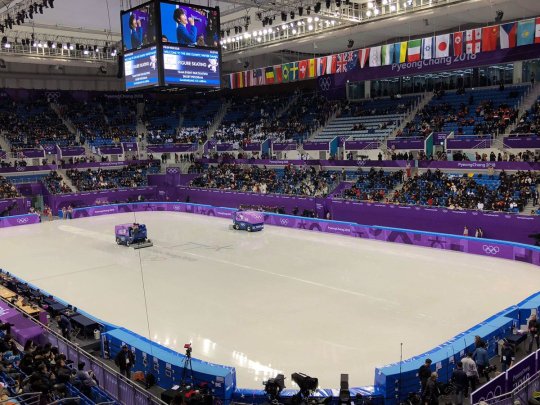
As mentioned, the ladies' single figure skating competition of the 2018 Winter Olympics was held at the Gangneung Ice Arena in Gangneung, South Korea. Figure Skating Rinks have a total area of 18,707 ft2 (1738 m2), with an average length of 196.85' (60 m) and a width of 98.43' (30 m). Hence, its corners have a circumference of 27.89'. (8.5 m).
Equipment

Ice skates with good fit - a boot with a blade attached to the bottom, used for skating on ice.
Appropriate socks - a garment for the foot and lower part of the leg, typically knitted from wool, cotton, or nylon.
Ice skating bag - could come in the form of laps of hard skating around the rink for prolonged periods or hard skating from end-to-end or side-to-side.
Skate guards - covers used in ice hockey and figure skating that fit over ice skate blades.
Absorbent cloth or towel - when a liquid, such as water, comes into contact with a material with tiny holes in, such as paper or a sponge, the liquid is drawn into the tiny holes.
Skate soakers - when packed in a bag, your skates should not be left unprotected and should not be protected by the guards as they will keep moisture and rust will appear.
Appropriate clothing - if you are not a leisure skater but being coached, your coach will need to see your lines and how your knees are bending. Therefore, you should not be wearing large clothes.
Gloves - a covering for the hand worn for protection against cold or dirt and typically having separate parts for each finger and the thumb.
Water bottle - is a container that is used to hold water, liquids or other beverages for consumption.
Tissues - tissue paper.
Basic Skills

These teach the basics of ice skating and lays the groundwork for figure skating, hockey, and speedskating. Forward and backward skating, stops, edges, crossovers, and turns are all introduced in six progressive stages. Skaters will be able to easily progress to more advanced fields of skating after passing the Basic Skills 1-6 stages.
Basic 1
A. Sit on ice and stand up
B. March forward across the ice
C. Forward two-foot glide
D. Dip
E. Forward swizzles (6-8 in a row)
F. Backward wiggles (6-8 in a row)
G. Snowplow stop
H. Rocking horse (2–3)
I. Two-foot hop in place (optional)
Basic 2
A. Forward one foot glides (R and L)
B. Backward two-foot glide
C. Backward swizzles (6–8 in a row)
D. Two-foot turn from forward to backward in place
E. Moving snowplow stop
F. Forward alternating half swizzle pumps, in a straight line (slalom-like pattern)
Basic 3
A. Forward stroking, showing correct use of blade
B. Forward half swizzle pumps on a circle (6–8 consecutive clockwise and counterclockwise)
C. Moving forward to backward two-foot turn (clockwise and counterclockwise)
D. Backward one-foot glides (R and L)
E. Forward slalom
F. Two-foot spin (up to two revolutions)
Basic 4
A. Forward outside edge on a circle (R and L)
B. Forward inside edge on a circle (R and L)
C. Forward crossovers, clockwise and counterclockwise
D. Forward outside three-turn, R and L from a stand-still position
E. Backward half swizzle pumps on a circle, clockwise and counterclockwise
F. Backward stroking
G. Backward snowplow stop (R and L)
Basic 5
A. Backward outside edge on a circle (R and L)
B. Backward inside edge on a circle (R and L)
C. Backward crossovers, clockwise and counterclockwise
D. Beginning one-foot spin (up to three revs, optional entry and free-foot position)
E. Hockey stop
F. Side toe hop (both directions)
Basic 6
A. Forward inside three-turn (R and L from a standstill position)
B. Moving backward to forward two-foot turn on a circle, clockwise and counterclockwise
C. T-stop (R or L)
D. Bunny hop
E. Forward spiral on a straight line (R or L)
F. Forward lunge (R or L)
Technical and Tactical Skills

Alina Zagitova (Russia). Her trademark triple lutz-triple loop variation, as well as other triple loop combinations like the triple flip-triple loop, are her specialties. As observed, she also does other combinations including the triple lutz-triple toe, double axel-triple toe, and triple flip-double toe-double loop. She also uses the "Rippon" version, in which she jumps with both arms above her back. Indeed, with her exceptional technical and tactical skills, she managed to get to the top of the competition, earning the triumph for herself and her homeland.
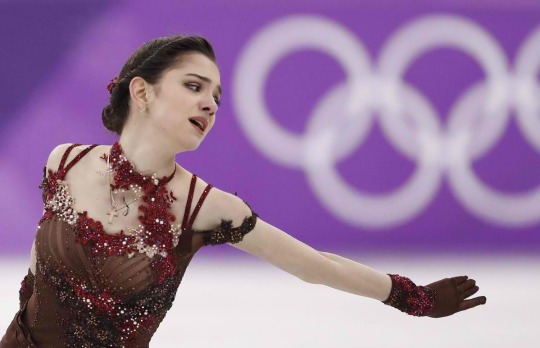
Evgenia Medvedeva (Russia). From what I've observed, most all of her leaps are performed with an arm above her back, a practice popularized by Brian Boitano as part of his triple Lutz jump. She does all jump variations that result in a triple toe loop. Furthermore, she has also practiced triple-triple-triple and triple-triple-triple-triple-triple jump combinations. She also began using the triple loop jump at the end of a variation. At the end of her performance, she often does a cross grab I-position spiral into the rink's middle.
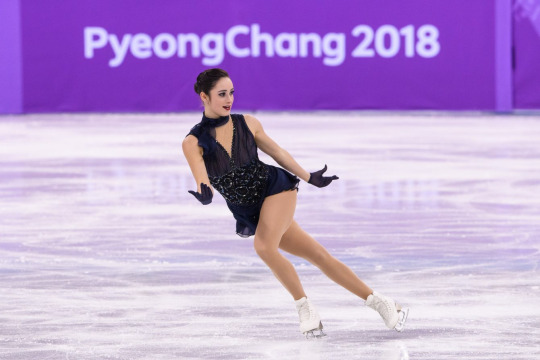
Kaetlyn Osmond (Canada). Osmond spins and jumps in a clockwise direction. As observed, she has utilized efficiently the euler jump wherein she takes off from one skate's back outside edge and falls on the opposing skate's foot and edge. Hence, she achieved it effortlessly before the third jump in a three-jump mix to get a skater on the right edge so they can do a Salchow jump or a flip jump. Furthermore, the fact that it only possible to do it in one hop, yet she has done it very well is amazing.
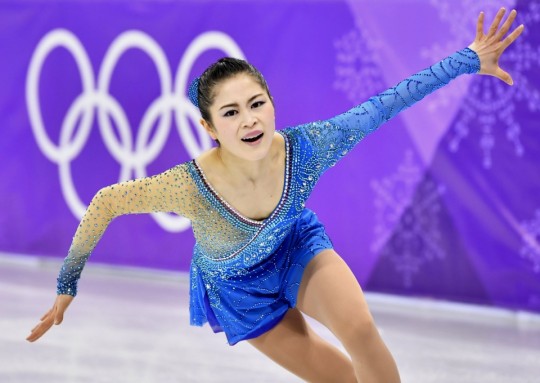
Satoko Miyahara (Japan). Her technique could cause discussion, but I watched every skater in the ladies' short program in slow motion, and hers were no less spectacular than the others. Her power is her ability to bring together a curriculum like an artwork; not only jumps, but spins and moves all fall together as one unified power.

Kaori Sakamoto (Japan). The V reflects the absence of a seat. I just slowed it down, and she didn't even get two revs after the flying transition. Since it was a hybrid spin, she did not get a zero. As long as you have two simple positions, you can also get some credit with a mix spin. She always had a camel and an upright, so the V was simply attached. When she popped the flip, I yelled in fear. She was just one triple flip away from earning a world silver medal. I just can't get enough of her skating because it's so light and strong.
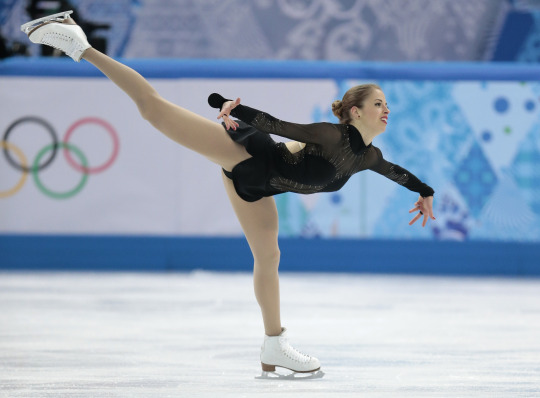
Carolina Kostner (Italy). Kostner flips and hops counterclockwise. She's done triple-triple combos. Her fast speed over the ice is very fascinating to watch. I must say that her jumps are top favorite among the others. With a pure toe pick (no blade assistance or hammering), deep edges on both the flip and the Lutz, no unnecessary PR or muscling, no chronic UR, excellent air location, steady flow, and massive ice coverage. Indeed, her jumps are simply amazing.

Gabrielle Daleman (Canada). She has often utilized edge jumps such as salchows wherein as she pushing on the inside edge of their biggest foot, she leaps into the air. She, then, does a half-revolution in mid-air before landing effortlessly on the outside edge of her weakened foot and attempting to skate around the ice. Moreover, I also noticed how she used toe loops where she hops counter-clockwise while doing a toe loop. Hence, she easily glides backwards around the ice rink before jumping into the air with the outer edge of her back skate and the toe-pick of her front skate. She flips half a revolution in mid-air before landing on the outer edge of her back skate once more. Nonetheless, she was just overall graceful.

Choi Da-bin (South Korea). Her flips where she pushes on the inside edge of her back foot and the toe-pick of her front skate to float backwards around the ice rink before jumping into the air, is just amazing. She, then, turns in mid-air for a full revolution before settling effortlessly on the ice and proceeding to skate. Indeed, she’s not just strong, but she’s also a very talented and skillful young woman.

Mirai Nagasu (United States). This competitor is a powerful spinner who got a perfect +3.00 execution grade for her layback spin. As seen, she often does the Biellmann spin with her hands on the boot of her skate rather than the blade. She has also used a triple Axel jump in her routine, landing two completely inverted triple Axel jumps. Not to mention the fact that became the first woman in the United States to perform a triple Axel in an Olympic competition.
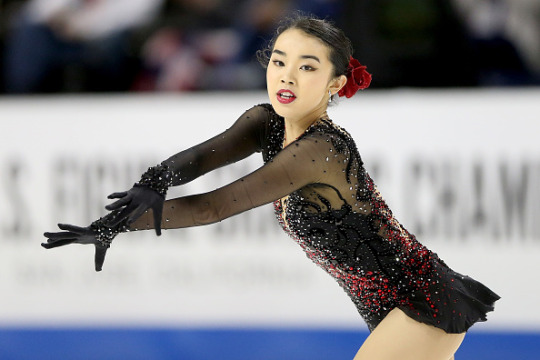
Karen Chen (United States). She’s one of the figure skaters who utilized efficiently the toe jump, lutz, where she jumps from the outer edge of her back foot rather than the inside edge. When launching into a complete, mid-air revolution from the outside edge of the skate, staying upright is incredibly challenging. It is a known fact that learning the lutz involves hours of hard labor, suffering, and frustration. Indeed, she made it really easy to see rather than hard.

Bradie Tennell (United States). Her consistency, jumping ability, resiliency, and mental resilience were well-known. Moreover, her jumping and spin abilities are just out of this world. Her consistency and technical expertise have been her greatest asset, however, she somehow lacked the expressiveness that distinguishes great skaters from mediocre ones.

Maria Sotskova (Russia). She used a spiral jump, which involves taking off from the outside edge of her best foot and spinning a full revolution in the air. She then lands backwards on the same foot and then starts skating around the ice or prepares to spin again.

Nicole Rajičová (Slovakia). Her grace, leaps, strength, and beauty are unparalleled, and it was a joy to watch her skate perfect programs everywhere she competed. Moreover, she has exceptional discipline, faith, and strength on the ice. Above all, triple axel is impressive and inspirational.

Nicole Schott (Germany). Her skating spins were amazing to look at. She effortlessly moves her body in mid-air, spinning moves generally take place on the ice rink surface itself. When entering into a spin, she efficiently rotates on the ball of her foot, allowing for the greatest possible flexibility.
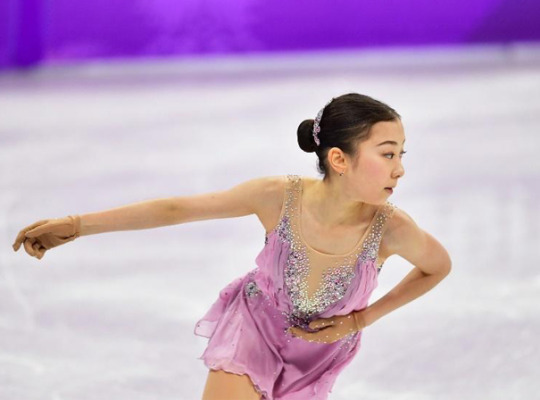
Elizabet Tursynbayeva (Kazakhstan). She has successfully landed a quadruple salchow in her performance. Hence, the fact that she is the first female skater to land a quadruple jump in senior competition is mind-blowing. She has also utilized the upright spin where she positions her body in a straight, upwardly position with one or both of her feet remaining on the ice throughout the maneuver.

Kailani Craine (Australia). She's a ball of energy on the ice in her little dress and routine, and it's a joy to experience her. She seems to be floating on the ice. Her skating and jumps tend to be effortless and light. She still seems to be concentrated, and I respect how she conducts her programs in any case.
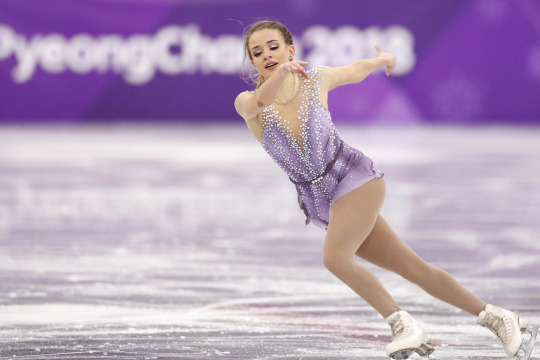
Isadora Williams (Brazil). She has utilized all the five triple jumps, but her salchow seems to standout the most for me. Pushing on the inside edge of her biggest foot, she propels herself into the air. She lands effortlessly onto the outside edge of their weakened foot after executing a half-revolution in mid-air, before proceeding to skate around the ice.

Emmi Peltonen (Finland). With massive leaps worthy of being quads, she is severely underestimated. Furthermore, she has the ambition and physical ability to continue moving the field in terms of technology, and you can also see her beginning to understand and focus on artistry.

Alexia Paganini (Switzerland). Her perseverance and discipline in the match are incredible. Among all, she has outstanding jumping technique. Her skating has a lovely delicateness to it, which her latest short program aptly demonstrates, and when the jumps are there, they're fantastic. In terms of artistry, she's one-of-a-kind.

Loena Hendrickx (Belgium). Her skating is strong and vibrant. She gains strength for her axels before springing forward into the air from the outer edge of their highest foot. She spins one and a half revolutions in mid-air before landing on their weaker foot's outer edge. This is a complex move without the assistance of a toe-pick to help her catapult herself.
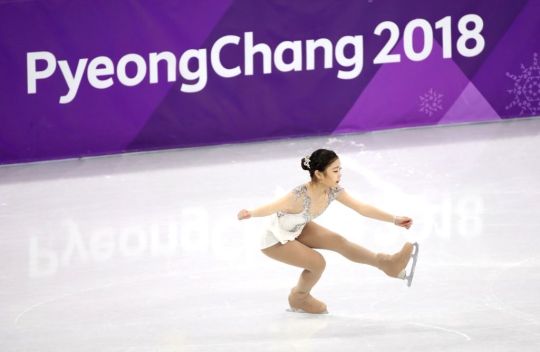
Kim Ha-nul (South Korea). Despite being so young, this figure skater has managed to showcase well her absolute talent and skills in her performance. She also used camel spin, in which she forms a ‘T' with her body. Skating is done on her stronger knee, while the other is bent sideways, right behind the skater's head. During this spin, she leans her neck forward, bringing her head in line with the straightened rear leg.

Maé-Bérénice Méité (France). Her technique is fantastic and amazing, particularly considering her build and lean, gorgeous body. Through her moves, she knows how to slay it on the rink. She glides over the ice with ease. Her transfer checks are also incredible. Finally, her artistry is so sweet and elegant, not ostentatious or garish, just delicate.
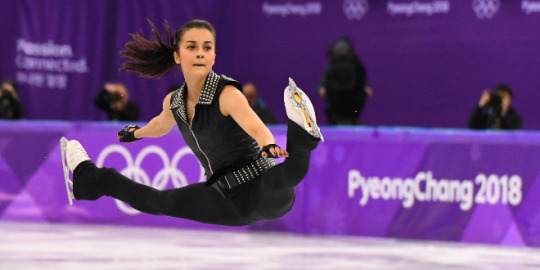
Ivett Tóth (Hungary). I find her programs unusual because most people prefer classic music over other genres; however, she has shown that she can skate to classic, punk, and pop music. Her leg extensions and choreography, as well as her models, are all fun to watch.
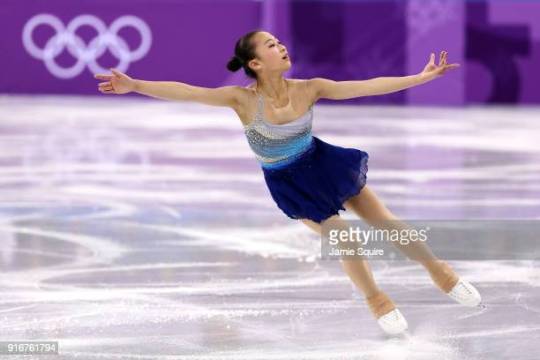
Li Xiangning (China). She's done flips where she hops from the back inside tip, using the toe pick to vault the skater into the air — it's not a back flip, despite the name. She's done flips where she hops from the back inside tip, using the toe pick to vault the skater into the air — it's not a back flip, despite the name. She has even performed an axel, which allows her to leap into the air while looking forward. As a result, an additional half revolution is needed, resulting in a backwards landing.
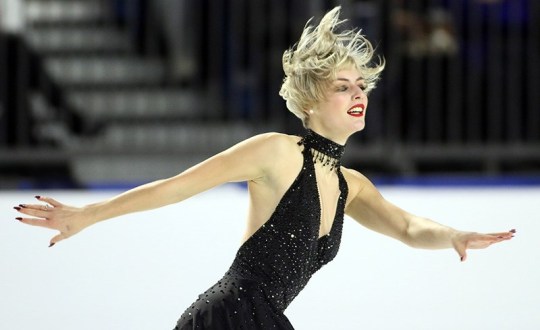
Larkyn Austman (Canada). She also used grab foot, which entails a spin or spiral stance with one or both hands holding the free leg. The Biellmann is the most well-known catch-foot location. She has also used cantilever, which includes bending the elbows and bending the back upwards, parallel to the ice. The aspect may be done with one's hands on the ice or with one's arms out in the air.

Diāna Ņikitina (Latvia). Her spins are excellent. She could only spin in one direction, clockwise or counter-clockwise. When turning, she tends to choose a counter-clockwise rotation. Her flying spins, which can move from a forward to a back spin and can also be executed as part of a spin series, are also remarkable.
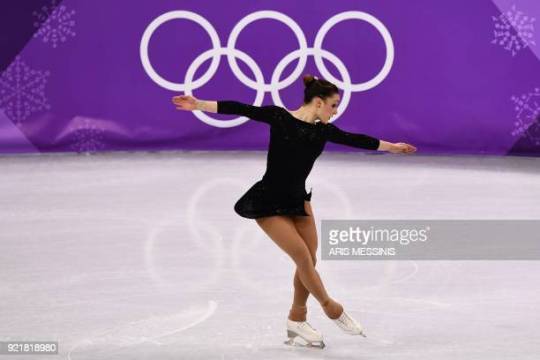
Giada Russo (Italy). I was astounded by the calm, still energy she brings to the ice; you could hear a pin drop during that performance. It appears that she wants to work on her technical material. However, she is unlikely to give up such lovely transitions in order to carry out more challenging leaps.
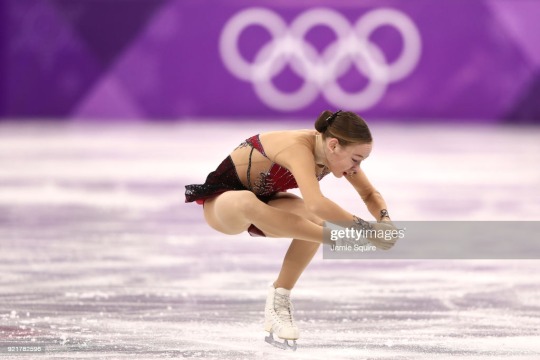
Anita Östlund (Sweden). She has utilized the upright spin where her body is positioned in a straight, upward stance, with one or both of her feet staying on the ice during the maneuver. As a result, she was impressive to watch as she enters a spin and rotates on the heel of her foot, making for maximum stability.

Anna Khnychenkova (Ukraine). She has utilized she skates on one leg only, while sticking the other out in front of them. When turning, she bends her skate leg as far as it can go, practically sitting as low as she can without falling over. She was an outstanding performer in general.

Aiza Mambekova (Kazakhstan). First of all, I really adore her costume, it perfectly fits her program. She has stunning hands and more musicality than other skaters who get twice her points, not to mention outstanding costumes. However, I am hopeful that she will be able to add more triple jumps to her arsenal and make a significant impact in the coming quadrennium.
Rules of the Sport
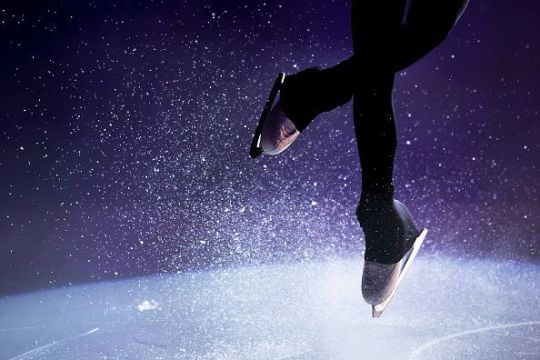
Players & Equipment
Figure skating is a sport in which both men and women compete, and the only equipment needed is a pair of specially designed skates known as "Figure Skates."
Figure Skates
Figure Skates are specially designed skating shoes with thick steel blades at the base and jagged grooves at the front known as “toe picks” – which assist athletes with their footwork on the ice, as well as landing and spinning. The specific style of toe picks can vary.
The key blades are usually about 4 millimeters wide, although this varies depending on the athlete's foot style. They also have a small bend on one side to help with ice turns.
Figure skaters will often want to skate on the outer tips of their wheels. In order to accommodate step-work rather than skipping, ice dancers normally have slightly narrower blades on the base of their shoes, with a slightly different shape.
Costumes
In order to perform on a professional level, all men and women must wear special costumes. Men are expected to wear pants, while women must wear skirts and tights, trousers, or neon spandex.
Scoring
Figure skaters are judged by a jury of judges who use the ISU Judging System to rate them (usually nine judges including a technical inspector, and also a referee). This system works by giving varying numbers of points to competitors with different kinds of movements, as well as how quickly and successfully they are performed. A Grade of Execution (GoE) is measured, followed by a Scale of Success (SOP). A Grade of Execution (GoE) is measured, and this grade is then converted into an overall mark using a Scale of Value Table.
Ability, footwork, performance, perception, overall execution, choreography, and timing are the key factors scored during a normal Figure Skating performance. The more complicated maneuvers are often awarded the highest scores if they are done correctly. For example, the more rotations in a leap, the higher the score.
Winning
The athlete or team with the highest total score wins a Figure Skating competition.
Figure Skating Rules
Figure skaters must make their results interesting. According to the Zayak Rule, no participant can try triple or quadruple jumps more than twice.
If participants may not follow the rules and regulations for music and costumes, judges can penalize them or disqualify them entirely. Certain forms of music are forbidden, and costumes must be free of "excessive decoration" or be too revealing.
Time penalties will also result in athletes being disqualified.
Officiating the Sport

Officials are well regarded by the Association. They are volunteers who offer of their time, skills, and experience to help our athletes improve. Officials of figure skating are classified into several categories: evaluators, technical controllers, technical experts, judges, referees, and data technicians, each with their own duties.
Evaluators. They examine skaters at evaluation days organized by Skate Canada member clubs on a regular basis so that their skaters can be evaluated and progress to the next stage or examination. They are in charge of coordinating and evaluating the evaluations that have been delegated to them. They control the on-ice operations as an assessor and referee during the evaluation session. Candidates studying to become evaluators will be taught how to run appraisal days, stressing the value of making choices in the skater's best interests. The following thresholds must be evaluated by evaluators:
STAR 6 – Gold Free Skate Assessments
STAR 6 – Diamond Dance Assessments
STAR 6 – Gold Skills Assessments
STAR 7 – Gold Artistic Assessments
Technical Specialists and Technical Controllers. Former competitors, coaches, judges and referees are hired as technical specialists and technical controllers to ensure the proper recognition of elements and their levels of difficulty when skaters and teams attempt them in competition.
Judges. They officiate at all stages of competitions and are in charge of judging a skater's success in competition as well as assessing competitive assessments.
Referees. These are the people who oversees ice conditions, maintains that all measurement or competitiveness laws are enforced, and serves as chairman of the judges' panel and arbiter of protocol or practice conflicts. At smaller competitions, the referee usually serves as both a referee and a judge. They are also in charge of preparing notes on the judges' evaluations of their results at a particular case. The records are scrutinized as part of the official promotion procedure. At the close of a Challenge or Championships, the Referees have consultation sessions with the judges.
Data Specialists. These are the people in charge of measuring the judges' marks and tabulating the final score. The data specialists are usually located at ice level if free labeling is used at a case. They'll be in the result measurement center at other cases.
References & Photo Credits
https://en.wikipedia.org/wiki/Figure_skating_at_the_2018_Winter_Olympics_%E2%80%93_Ladies%27_singles
https://www.dimensions.com/element/figure-skating-rink
https://www.ymcanoco.org/ice/learn-to-skate/basic-skills-(ages-7-17)
https://www.rulesofsport.com/sports/figure-skating.html
https://skateabnwtnun.ca/officials/types-of-officials/
https://www.nytimes.com/2018/02/22/sports/olympics/womens-figure-skating.html
https://pbs.twimg.com/media/DVj77NlVMAAyhZ2.jpg
https://wallpaperaccess.com/full/2107085.jpg
http://img2.chinadaily.com.cn/images/201803/19/5aaf50b0a3106e7d2d777694.jpeg
https://olympic.ca/wp-content/uploads/2018/02/team-canada-kaetlyn-osmond-pyeongchang-2018-team-event-e1518401667213.jpg?quality=100
https://img.kyodonews.net/english/public/images/posts/a65bc4bdd848b7e91f4a4a530f33c58d/photo_l.jpg
https://pbs.twimg.com/media/DWiD-MqUQAA87L7.jpg
https://olympics.nbcsports.com/wp-content/uploads/sites/10/2016/02/carolina-kostner.jpg
https://www.thesun.co.uk/wp-content/uploads/2018/02/nintchdbpict000384524619.jpg
https://www.olympic.sk/sites/default/files/styles/gallery_full_watermark/public/field_media_image/2021-02/20180223_zoh18_kraso_014501766.jpg?itok=2fxAoh02
https://i.pinimg.com/originals/10/09/40/100940d60d24c57a2cf9b4b48b290d48.jpg
https://bucket.mn2s.com/wp-content/uploads/2020/06/26190125/Elizabet-Tursynbaeva-MN2S.jpg
https://static.hollywoodreporter.com/sites/default/files/2018/02/loena_hendrickx-compressed.jpg
https://files.prokerala.com/news/photos/imgs/1024/south-korean-figure-skater-kim-ha-neul-practices-653249.jpg
https://static.billboard.com/files/media/Mae-Berenice-Meite-winter-olympics-2018-billboard-1548-compressed.jpg
https://kfox.com/wp-content/uploads/sites/9/2018/02/Ivett-1.jpg
https://media.gettyimages.com/photos/xiangning-li-of-china-competes-in-the-figure-skating-team-event-on-picture-id916761794?s=612x612
https://www.vmcdn.ca/f/files/glaciermedia/import/lmp-all/1136604-0221-austmanfile-1w.jpg;w=800
https://media1.popsugar-assets.com/files/thumbor/zTXJZXyLlZsmL35TLhh6e7fLgLI/fit-in/2048xorig/filters:format_auto-!!-:strip_icc-!!-/2018/02/20/125/n/1922729/tmp_jNHbsU_39939977ec9df988_GettyImages-921781694.jpg
https://media.gettyimages.com/photos/italys-giada-russo-competes-in-the-womens-single-skating-short-of-picture-id921818980?s=612x612
https://media.gettyimages.com/photos/anita-oestlund-of-sweden-competes-during-the-ladies-single-skating-picture-id921782596
https://img.huffingtonpost.com/asset/5a902c02210000a007602211.jpeg?ops=scalefit_960_noupscale
https://i.pinimg.com/originals/12/17/36/121736c509d54ee475c598c755929694.jpg
https://i.pinimg.com/originals/20/24/8a/20248a45fad56ff62931927cd3f0bf6b.jpg
https://www.usfigureskating.org/sites/default/files/styles/hero_image/public/media-library/officiate.jpg?itok=0Tih8o1z
https://iceskatingpassion.com/figure-skating-equipment/
https://www.rookieroad.com/img/ice-skating/ice-skating-equipment-list.png
0 notes
Text
The ladies' single figure skating competition of the 2018 Winter Olympics was held at the Gangneung Ice Arena in Gangneung, South Korea. The short program was held on 21 February, and the free skating was held on 23 February.


Olympic-sized rinks have dimensions of 30 m × 60 m (98.4 ft × 197 ft), NHL-sized rinks are 26 m × 61 m (85 ft × 200 ft), while European rinks are sometimes 30 m × 64 m (98 ft × 210 ft). The ISU prefers Olympic-sized rinks for figure skating competitions, particularly for major events.

1 - Ice skates with good fit
Of course, the first thing you need are ice skates. No surprise here.
But make sure they are suitable for your level and fit your feet well.
#2 - Appropriate socks
Many people are scared their feet will be cold when ice-skating, so they want to use thick socks.
However, the thinner the socks the better. At high level, some skater even skate barefoot because socks cause friction. With thin socks, you can feel your sole better and control pressure to control your movement.
If you choose to wear socks (like I did), you have to choose some that will minimize rubbing (avoid seams).
So choose socks that are thin and high above the boot but avoid entirely polyester socks. Or you can wear tights.
#3 - Ice skating bag
I know in movies and pictures, cool girls seem to be wearing their skates on their shoulder using laces attached together. This is a really bad idea. Please, do not to this. You will damage your laces, your skates and your clothes as everything bangs together.
You should carry your skates in a bag, if possible, with aeration.
#4 - Skate guards
It is absolutely critical to have a pair of skate guards. As soon as you get off the ice, you should protect your blades with the guards.
The smallest impact on your blade means that you can't skate anymore, and you would have to buy new ones. The blades are only supposed to be on the ice.
However, wear the guards only to walk around. Don't leave them on the skates once removed from your feet!
There are 2 main types of guards: the centipede /latch (often preferred by beginners as it is easier to set up) or the Universal / Spring (for more stability and protection when walking with your skates).
#5 - Absorbent cloth or Towel
You should always have something to dry your blades and mounting surfaces after a practice. It is mandatory.
If you don't want rust to appear on your blades, you have to spend some time drying them thoroughly before packing them. I even recommend drying once, then waiting while you change and drying them again as condensation will have formed if you enter a warmer room.
The cloth should be gentle and absorbent - Good options are microfiber towel, chamois cloth, terry cloth.

Basic Skills
Basic Skills forms a strong foundation for skaters to explore the world of skating. Each level introduces new skills and techniques, encouraging skaters to advance while having fun in a healthy and social environment.
Basic Skills 1
Sit on ice and stand up
March forward across the ice
Forward two-foot glide
Dip
Forward swizzles — 6–8 in a row
Backward wiggles — 6–8 in a row
Beginning snowplow stop on two feet or one foot
Bonus skill: Two-foot hop in place
Basic Skills 2
Scooter pushes — R and L
Forward one-foot glides — R and L
Backward two-foot glide — Glide the length of skater’s height
Rocking Horse (one forward swizzle, one backward swizzle) — Repeat twice
Backward swizzles — 6–8 in a row
Two-foot turns from forward to backward in place — clockwise and counterclockwise
Moving snowplow stop
Bonus skill: Curves
Basic Skills 3
Beginning forward stroking showing correct use of blade
Forward half swizzle pumps on a circle — 6–8 consecutive clockwise and counterclockwise
Moving forward to backward two- foot turns on a circle — clockwise and counterclockwise
Beginning backward one-foot glides — focus on balance
Backward snowplow stop — R and L
Forward slalom
Bonus skill: Forward pivots – clockwise and counterclockwise
Basic Skills 4
Forward outside edge on a circle — R and L
Forward inside edge on a circle — R and L
Forward crossovers — clockwise and counterclockwise
Backward half swizzle pumps on a circle — clockwise and counterclockwise
Backward one-foot glides — R and L
Beginning two-foot spin — Up to two revolutions
Bonus skill: Forward lunges — both legs
Basic Skills 5
Backward outside edge on a circle — R and L
Backward inside edge on a circle — R and L
Backward crossovers — clockwise and counterclockwise
Forward outside three-turn — R and L
Advanced two-foot spin — 4–6
Hockey stop — both directions
Bonus skill: Side toe hop — R and L
Basic Skills 6
Forward inside three-turn — R and L
Moving backward to forward two- foot turn on a circle — clockwise and counterclockwise
Backward stroking
Beginning one-foot spin — 2–4 revolutions, optional free leg position and entry
T-stops – R and L
Bunny hop
Forward spiral on a straight line — R or L
Bonus skill: Shoot the duck — R or L
TECHNICAL AND TACTICAL SKILLS OF EACH TEAM
There are six major jumps in figure skating, all requiring a large degree of flexibility, poise and — above all else — patience. Aerial jumps will demand lots of hard work in the short-term, before you fully master their motions, but the experiences and satisfaction you’ll glean from them will soon make it all worthwhile.
Figure skating jumps are categorised as being either ‘toe’ jumps or ‘edge’ jumps. Toe jumps see skaters launch themselves into the air by ‘picking’ the surface of the ice rink with one of the ‘toe-picks’ on their skating boots.
In contrast, edge jumps don’t involve any toe-pick movement. Instead, participants use only their momentum and foot muscles to leap powerfully into the air.
Toe jumps:
Toe loops — When attempting a toe loop, the figure skater jumps in a counter-clockwise motion. He (or she) quickly glides backwards over the ice rink before using the outside edge of their back skate — and the toe-pick of their front skate — to launch into the air. The performer spins half a revolution in mid-air before landing, once more, onto the outside edge of their back skate.
Flips — When attempting a flip jump, the figure skater glides backwards across the ice rink before launching into the air by pushing on the inside edge of their back foot and the toe-pick of their front skate. The performer then spins a full-revolution in mid-air before landing smoothly onto the ice and continuing to skate.
Lutzs — The lutz jump is exactly like the flip; only here the skater launches into the jump from the outside edge of their back foot rather than the inside edge. It’s very difficult to stay balanced when launching into a full, mid-air revolution from the outside edge of the skate. As a result, the lutz is a tricky move to master, requiring hours of hard work, pain and frustration. In the end, it’ll be worth all the effort though!
Edge jumps:
Salchows — The salchow jump sees the performer launch into the air by pushing on the inside edge of their strongest foot. After performing a half-revolution in mid-air, the skater then lands smoothly onto the outside edge of their weaker foot, before continuing to skate their way across the ice.
Loop jumps — When attempting a loop jump, the figure skater takes off from the outside edge of their strongest foot before spinning a full-revolution in the air. The performer then lands backwards onto the same foot and either carries on skating across the ice or prepares to launch into another spin.
Axels — The axel is a key ice skating technique for all beginner skaters to aspire to! Here, the performer gathers momentum before launching forwards into the air by springing from the outside edge of their strongest foot. The skater spins one-and-a-half revolutions in mid-air before landing onto the outside edge of their weaker foot. Tricky, eh? Without the aid of a toe-pick to help launch the skater, this is an incredibly difficult maneuver which can take years of hard work to master. So keep practicing!
Key figure skating spins ...
Whereas figure skating jumps require the performer to maneuver their body in mid-air, spinning moves generally take place on the ice rink surface itself. When entering into a spin, the skater rotates on the ball of their foot, allowing for the greatest possible flexibility.
Upright spin — This is one of the easiest spins to master in the early days of your ice skating tuition. Upright spins see the skater position their body in a straight, upwardly position with one or both of their feet remaining on the ice throughout the maneuver.
Sit spin — This spin is self-explanatory really! It’s carried out when the performer skates on one leg only, whilst stretching the other limb straight out in front of them. Whilst spinning, the performer bends their skating leg as far as they can — essentially sitting down as low as possible without toppling over. In competition, judges award points based on how close to the ice a performer can bend whilst still maintaining their rhythm. It really is a case of ‘how low can you go?’
Camel spin — This popular move sees the performer position his or her body into a ‘T’ shape. The performer’s stronger leg is used for skating, whilst the other limb is stretched backwards, straight behind the skater’s head. During this spin, the performer leans their neck forward, bringing their head in line with the straightened rear leg. This maneuver may sound rather daunting, nevertheless, with practice and patience, the balance and suppleness that the camel spin requires will come to you in time.
RULES OF THE GAME
Athletes must wear approved figure skates.
Men must wear pants or trousers.
Women must wear tights, trousers, and or unitards.
Athletes must vary their performances from routine to routine.
Certain types of music are not allowed.
Athletes can be disqualified for not following time regulations.
HOW TO OFFICIATE THE GAME
Officials are valued members of the Association. They are volunteers who donate their time, knowledge and expertise to assist in the development of our athletes. In figure skating there are many different categories of officials – evaluators, technical controllers, technical specialists, judges, referees, and data specialists each with a specific job to do.
Skate Canada officials must be at least 16 years old, meet certain criteria and complete certain task and activities to become qualified. Activities include:
– Clinics and seminars,
– Skill and Knowledge Assessments and Exams,
– Trial officiating,
– and actual officiating
The training Skate Canada provides to its officials is held in high regard around the world. Officials are required to attend clinics, write examinations and complete practical assignments. As their knowledge and experience increases, officials qualify to officiate higher levels of competition.
Evaluators
Evaluators assess skaters at assessment days arranged periodically by Skate Canada member clubs, so that their skaters can be assessed and move on to the next level or test. Evaluators are responsible for assessing the following levels:
STAR 6 – Gold Free Skate Assessments
STAR 6 – Diamond Dance Assessments
STAR 6 – Gold Skills Assessments
STAR 7 – Gold Artistic Assessments
At an assessment session, the evaluator coordinates and evaluates the assessments to which they have been assigned. During the assessment session, the evaluator acts as the assessor and referee controlling the on-ice activities. Candidates training to become an evaluator will be taught how to manage assessment days where the importance of making decisions in the best interests of the skater is emphasized.
Technical Specialists and Technical Controllers
Technical Specialists and TechnicalControllers are former athletes, coaches, Skate Canada judges or referees recruited for the correct identification of elements and levels of difficulty of these elements when attempted by skaters and teams in competition.
Judges
Judges officiate at all levels of competitions, and are responsible for assessing the quality with which a skater performs in competition and also assess competitive tests.
Referees
Referees oversee the ice conditions, ensures that all rules applicable to an assessment or competition are followed and acts as chairman of the judges’ panel and arbiter in policy or procedure disputes. At smaller events, the referee will typically act as both referee and one of the judges.
The Referee is also responsible for writing reports on the judges assessing their performance at a specific event. The reports are reviewed as part of the process of officials promotions.
The Referee also conducts review meetings with the judges at the conclusion of a Challenge or Canadian Championships.
Data Specialists
Data Specialists are the individuals responsible for calculating the marks awarded by the judges and tabulating the final result. If open marking is used at an event the data specialists are normally found at ice level. At other events, they will be in the result calculation centre. Generally, each event will have a Chief Data Specialist who ensures all accounting rules are followed when determining the result of an event. They work with the technical representative or referee and technical controller to post results, attend draws and to answer questions regarding results calculation.
0 notes
Text
Winter Solstice Appeal
@wintersolsticefestival
Song: Fuyu no Dahlia by Asami Imai
Pokemon:Ran the Maqurain and Lia the Kirlia
Moves:
Ran: Ice Beam, Silver Wind, Water Pulse, Signal Beam
Lia: Misty Terrain, Swift, Icy Wind, Psyshock
Shiori took a breath and stepped on stage when she was announced. When she stepped on her mark, a bit behind center, she faced the audience, eyes closed, and posture relatively relaxed. In her hands were two pokeballs, she had decided to forgo using seals in this appeal after having trouble getting them not to look clunky with the performance. She could hear the cheering from the audience welcoming her home. She smiled, opened her eyes, and tossed both balls higher, rather than farther. Both pokemon were still in their costumes. They landed a foot in front of their trainer. Ran stayed still, waiting for the music to start, while Lia moved into a pose. One foot in front of the other, her right arm across her torso while her left was raised in the air.
The music started, low and sounding more like ambient noise. That was Ran’s que. With an ice beam, she started freezing a large portion of the stage into a smooth, flat oval. She hadn’t gotten very far before, the music proper started up. Lia stepped on the ice as soon as Shiori started singing, pushing off and gliding to follow the beam of ice around. She skated on her own as the oval was completed, not leaving too much room between her and the beam as she did her spiral and toe loop, even going down on one knee in a lunge when she had to be between Ran and the end of the ice. When the ice was done, Lia swizzled her way back to the Masqurain. She went into a spin in front of Ran and held out a hand when she was done, inviting the bug type to join her on the ice right as the music paused.
It picked back up a second later as Ran flew onto the ice, the two spinning around each other as if Ran had actually run into her arms Lia gave her partner a huge grin. They slowed down and Lia pulled Ran further onto the ice excitedly. As the music slowed, and the two started traveling around the edge of the ice, Lia doing a three turn before reaching one of the smaller points of the turn and throwing one hand out at the Masqurain as she did crossovers as the went around that smaller point, the other arm out towards the side for balance. At the end she brought her hands back near her chest.
Lia turned back around and did another spiral, Ran, mimicking, just bowed her head. When the two came back up, Lia swerved to the other side of Ran and towards the center while Ran flew to where Lia had just been. The two swerved back and forth slowly until they got to the got to the other end of the ice, as they returned towards the center the music started picking up, and Ran flew lower, and Lia reached out to her. Ran stopped flying as Lia held onto her. She picked the bug type over her head, and started a spin in the center of the ice. As she did that She used Misty Terrain as the music started to slow, careful to keep the mist low and unobtrusive towards the front and sides of the stage, only going high enough to barely cover her feet before fading, but let it billow back.
Lia lowered Ran as the music picked back up, and Ran started flying again, even though Lia was still holding on as they skated. Eventually, Lia let go, Ran stayed close and on her level, flying higher during the jumps but descending at the same time as the psychic. The only time this changed when Lia went into a sit spin, Ran flew directly overhead, while Lia used swift around them. Ran responded with a Silver Wind that caught the stars Lia created, as well as temporarily clearing the mist around them. The sparkling wind pulled all the stars above them.
Ran orbited down and around Lia a couple times as the Kirlia rose out of the spin, kicking her leg back so they were at the same level again. They took off down the ice slowly, seeming to enjoy their time together under the stars. They swerved back and forth, changing positions again, but not going as far from each other, after that was matching spins. They skated a little longer before Lia went into a triple loop, Ran flying higher and spinning in her own version of it. Ran spun to fly backwards. Both pokemon, keeping eye contact with each other as they made a lap around the ice, Lia crossing over on the tighter curves of the ice. They were about to make another lap when Lia dropped into a lunge, and spun to be going backwards. She raised her arms to either side of her partner’s head. She dropped her hands, and raised out of the lunge as the stars started to fade. She glided ahead of her partner.
Ran flew towards the middle of the ice, and shot a Water Pulse straight above her. The force of the water knocking the remaining stars away. Lia, who had been circling around the center waited until the water was falling to use Icy Wind, freezing the falling droplets. Said droplets shined in the stage lights like glitter as they fell and shattered on the ice below. It didn’t seem to bother either pokemon, however, as they had already gone back to skating in sync with each other. The both wind moves had faded away, and the mist from earlier rolled back in as the music all but paused.
Taking off down the ice as the music picked up. The did spirals facing each other, before separating from each other, and doing matching spins. They stayed apart as they went down the ice, pivoting at the same time. They met back up at one of the smaller ends, and skated together down the center.
Lia reached out to hold Ran again as they skated, Ran stopped flying for a second, and allowed herself to be thrown in the air. She resumed flying to give herself a bit more height. Lia had continued skating, now backwards, as her partner rose. The two pokemon readied their attacks to launch at the same time. Ran sent a Signal Beam at her partner, while Lia returned with a Psyshock. The multicolored beam and the psychic collided in mid air and rippled out like an aurora.
Ran swooped down to her partner, both pokemon orbiting around each other as the vocals dropped off completely. Lia skated off after giving her partner a grin as the aurora faded, leaving Ran to chase after her. While Lia was ahead, she spun to face Ran and did a complicated look series of foot work. Ran caught up to her, and they did a small jump, Lia turning to face forward, and skated off together at least until Ran got in front of her, restarting their chase.
When Lia caught up to Ran, she plucked the bug from the air, and did another three turn to turn backwards, and again to turn to the front. The Kirlia adjusted her grip to wrap her arms more securely around the Masqurain in time for to be lifted off the ground by her. Ran spun around quickly, causing the psychic type holding onto her, to swing in a wide arch until she slowed down and stopped spinning. She lowered Lia to the ground as she flew forward. Lia let go as soon as her toes touched the ground. They skated around the rink with one more jump going into a lunge as the music suddenly slowed. Shiori started singing again.
Lia and Ran rose slowly. Lia reached out an arm towards Ran as she circled around her, Ran turning to face her. Lia went into a final spiral leading Ran back to center stage. She lowered her leg and stopped, Ran moving closer until their foreheads were touching as the song ended.
They stayed there for a moment before separating slightly. Both Shiori and Lia curtsied, while Ran bobbed slightly lower. Shiori wouldn’t call them back yet, preferring to wait until after they were backstage, and she had a chance to praise their hard work.
#ws2017appeal#The Stars Urge Me Forward ✩ IC#Star Dust Stories ✩ Drabbles#contest appeals#((I should come up with a tag for that tbh))
2 notes
·
View notes
Text
⛸️
#so i decided to sign up for ice skating classes last week and i finally had my first lesson today#i was actually so nervous since it's the first time i have signed up for some sort of activity#like I've never done this before and i was kinda afraid of going by myself but i really wanted to try this#i am so glad i decided to do it#it was a lot of fun although it was so much harder than i imagined#i can't seem to get how to stop#and then doing swizzles and skating backwards is so hard#but i really can't wait for the next lesson#i want to see how much i can learn and improve#i really cant believe 2 months ago i knew nothing about figure skating and now im here taking classes#watching yuzu and other skaters has really inspired me to learn how to skate#hopefully i will have enough motivation to keep at it#how should i tag this🤔#genesis learns to skate#????#genesis on ice#afsgsgkglkl ok im going with this one
2 notes
·
View notes
Note
Hello! Just wanted to say how helpful this blog has been! I've passed basics 1 but cause of Uni I've unfortunately had to temporarily stop weekly lessons. Do you think I'll be able to pick off where I've left off relatively quickly once the semester ends (May-ish) and I can start lessons again? Considering I won't be able to touch the ice from now till then, but I'll continue practicing what I can off-ice. PS managed to do backward swizzles today (been off the ice for 2 weeks cause Uni 😢)
It really depends because some people find that when they take a break they forget everything and others are able to get back on like they never left. It all depends on you because you might be someone who struggles or someone who isn’t effected by breaks so it’s really hard to say.
All I can say is good luck and I hope all your Uni stuff goes well so you can get back to skating :)
1 note
·
View note
Text
skating update!
Realized I haven't posted one in a while and I recently started learning some new things! first, an update on the old stuff: - I'm still going once a week, as a sort of weekend reward. it does nice things for my lil brain. - my skates are still breaking in, but they're comfortable for just... moving basic in. also getting the hang of lacing them right the first go around! still need some breaking in for those squats though! - I can now warm myself up REALLY easily. it's great! I can totally skate on my own. - I'm still practicing stopping - sometimes it's harder if the ice is kinda crappy! but I'm getting there - I'm learning to be pro at my forward swizzles! half the time I can even start FROM NOT MOVING v exciting new stuff: - I started working on backward swizzles! they're... really hard atm. but I'll get there! - I also started learning how to do a spin on my toe pick, and push with the other foot. this is apparently frequently used to get into a two foot spin. I hope to be able to do that soon! - I also started learning how to do this like..... flip turn thing to go into skating the opposite direction (forwards to backwards or vice versa). this one is still really hard to do though. - our friend's skates should come in soon - hopefully so we can pick them up this weekend! then all three of us can go be fancy and skate together in our OWN skates! and then do a stretching cool-down session on the upper floor... it's hard though, so we're gonna get yoga mats! maybe next time I'm at the rink I'll see if I can get one of my friends to record me doing my forward swizzles. They're really cool, and I feel like I'm really getting the hang of them! I definitely wanna show off a bit more, hehe.
0 notes
Text
Day 4: Has it really only been 4 days?
So hit the ice again today since I am an adulting adult who only gets to skate on weekends and there was no ice available yesterday. Anyway got my new skates yesterday and I was so stoked to try them out and omg oh. My. God. They make all the difference in the world. First of all they actually fit, they were heat molded to my feet so they're like perfect, they're like more comfortable than most of my shoes. On top of that they're actually sharp, the blades actually cut into the I've instead of slipping along the top of it, I can find my edges and I can stroke so so much easier it's amazing. So I spent an hour on the ice, a solid hour, I got really good at stroking, and swizzling, I got that down, did some dips, attempted to go backward but that didn't really work out so well, but hey the effort was what counted. I even experimented a bit with outside and inside edges doing some serpentines and slaloming. It was so much fun. I also fell really hard on my ass and I am like 95% sure I've bruised my tailbone. I don't think I've broken it but I definitely definitely brushed it. But hey if I'm falling it means I'm trying new stuff and progressing so I'll take it. I'm actually off a few days this week so I'm gonn a try out the mid morning public skates which shouldn't be so crowded so yay. My goal for that is to stroke all the way around the rink and swizzle all the way around, maybe even try going backwards we'll see how we go. Watch this space amazing things are about to happen. Til next time.
0 notes